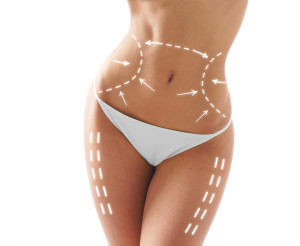By Dr. Peter Hyans, Berkeley Heights, NJ
 Also known as lipoplasty, liposuction is an outstanding and commonly used procedure to remove fat from and restore youthful contours to the neck, upper arms, abdomen, buttocks, hips, thighs, knees, and calves. Liposuction can refine areas of the body that do not respond to weight loss and exercise.
Also known as lipoplasty, liposuction is an outstanding and commonly used procedure to remove fat from and restore youthful contours to the neck, upper arms, abdomen, buttocks, hips, thighs, knees, and calves. Liposuction can refine areas of the body that do not respond to weight loss and exercise.
Who can have liposuction?
If you are a man or woman in good health and you are at a healthy and stable weight, you are likely to be a candidate for liposuction. The best candidates for liposuction are women and men who take care of themselves, have realistic expectations given their overall appearance, age, and skin type, and who want to treat stubborn areas of fat that do not respond to diet and exercise.
Liposuction is not a substitute for weight loss or exercise: it will not improve or correct dimpled skin (cellulite).
Firm, elastic skin is best suited for liposuction because it helps support new contours that liposuction yields. People with loose skin that does not shrink to fit the new contours from liposuction benefit most from a combination of liposuction and skin-tightening procedures such as tummy tuck, buttock lift, thigh lift, and arm lift.
Talk with your Surgeon Network plastic and cosmetic expert about which liposuction and cosmetic procedures will give you the exceptional results you seek.
About Liposuction
During liposuction, the plastic surgeon uses a small tube (or cannula) to break down and suction fat from areas of the body that do not respond to diet and exercise.
In many cases, plastic surgeons use a special (tumescent) technique to help protect surrounding tissue and reduce bruising, swelling, and pain after the procedure. Tumescent liposuction involves injecting excess fat with anesthetic liquid before suctioning. The liquid causes pockets of fat to swell and firm up ¾ an approach that makes the liposuction tube glide smoothly beneath the skin while suctioning fat.
Some less-involved liposuction procedures can be performed under local anesthesia and intravenous sedation to ensure that you are relaxed and comfortable.
Extensive liposuction, especially if it is combined with other cosmetic surgeries, requires a general anesthetic and an overnight hospital stay. The length of any liposuction procedure depends on the number of areas you are having treated and your unique needs and desires.
Does liposuction leave scars?
Scarring from liposuction is minimal. Incisions for the procedure are very small (typically ¼ inch). In addition, surgeons place liposuction incisions in natural creases of the body so that they will be concealed once they have healed. In most cases, scars from liposuction are almost completely unnoticeable once they have healed.
Liposuction Recovery and Results
The outstanding results of liposuction are long lasting if you maintain a stable weight.
During the first few days after liposuction, your surgeon will recommend over-the-counter or prescription medication to keep you comfortable. Most liposuction patients wear a compression garment for a week or longer to help minimize swelling.
Treated areas are likely to be bruised for a few weeks after the procedure. While most swelling will resolve within a month or two, some minor swelling can remain for 6 or more months.
Most patients return to work 2 to 3 days after liposuction, but some people need as much as 2 weeks before returning to work. The length of your downtime after liposuction will depend on the extent of the procedure. In addition, it is important to avoid vigorous exercise and strenuous activity for four to six weeks after liposuction to ensure proper healing. During that time, you will have follow-up visits with your surgeon who can tell you how you are healing and when you can resume all your activities.